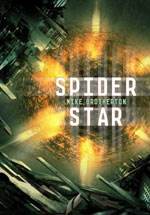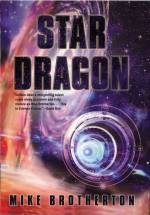Search
Ten Tips for Communicating Science to General Audiences
December 8th, 2011
I think about communicating science to a wide variety of audiences, both as a professor who does research and teaches, but also as a science fiction author. Knowing your audience is key, and knowing how to reach them better helps tremendously. A lot of what I say will apply to both non-fiction and fiction, speaking and writing.
1. Avoid jargon. Sometimes you just have to use a technical word, and then it should be clearly defined, but jargon makes a general audience transform into a horde of zombies. I even think it’s a good idea to avoid jargon for more expert audiences, since so much of science has become super specialized.
2. Beware of more subtle vocabulary issues. There’s a nice table you can check out that has some examples. One common one is the word “theory” that means “guess” in everyday use, but means a well tested and likely right explanation in science. More subtle ones are things like the word “trick,” which means something clever in math and science, but means something devious to the public. There are lots more examples. A “positive trend” in science is when the line goes up on the plot, a “negative trend” is when it goes down. To the public, a “positive trend” is something favorable, and it can be confusing when scientists talk about a negative trend concerning pollution and seem pleased with it.
3. Avoid arrogance and the appeal to authority when possible. Taking out unnecessary jargon helps. It sounds pretentious to stay that you or your character studies “stellar proper motions.” Just say, “how stars move.” Also in science you never have to justify something with “because so-and-so said so.” It’s always possible to discuss observations or experiment that support a conclusion. Now, if your goal is to be pretentious and off-putting, as in the character Sheldon Cooper on The Big Bang Theory, take the reverse of my advice here.
4. Use appropriate units. General American audiences want feet and miles, gallons and teaspoons, and pounds and tons. Give it to them unless there’s a good reason not to. Using the metric system may sound pretentious, and be harder to understand. Also try to use units appropriate for the scale being discussed. A light-year isn’t a common everyday unit, but the concept isn’t too complicated if you remind people that it’s not a unit of time, and it’s a lot more easily grasped that Alpha Centauri is a little over four light years away rather than 25 trillion miles. Million, billion, trillion, brazillion…it’s hard to meaningfully conceive of those orders of magnitude.
5. Relate concepts to everyday experience. Static and kinetic friction can be discussed in the abstract, but the concepts are a lot more comprehensible when talking about slipping on the ice — if your audience is from a cold climate, which is not always the case. Finding truly universal experiences can be a challenge, but worth it.
6. Use metaphors and analogies when available. Trying to describe a star moving through a density wave in its orbit through the galaxy isn’t the easiest thing to do. It’s easier to describe, and easier to understand for most of us, driving through regions of heavier traffic on a moderately busy highway.
7. Humor can be a good idea! Humor is engaging, and takes the edge off of anything that might come across as pretentious. When I talk about Issac Newton’s thought experiment to illustrate escape velocity and orbits, I often use the phrase Newton’s “big-ass” cannon just because it would have to be a giant cannon and the phrase “big-ass” sounds funny to me and a lot of audiences. Sometimes going into left field is amusing, and you could replace Newton’s “big-ass” cannon with a pissed-off Hulk throwing “puny humans.”
8. Historical approaches benefit from the strengths of narrative. People like story. Narrative makes ideas stick by putting them in a familiar context. Sometimes an abstract discussion of the concepts, or even a nice description related to everyday experience, just doesn’t do the job as well as a story. You can tell people that gravity bends light, but if you’ve got the time, the idea will stick better if you relate how there was an expedition to observe a total eclipse in South America to test this claim.
9. Engage multiple senses. Some people are visual, some auditory, and some tactile. When you’re giving a talk, you can use words and pictures easily enough. In a classroom or laboratory setting, you can involve students directly in demonstrations. It’s harder in fiction, but still possible. You can describe not only what it looks like through a telescope, but what it’s like to listen to someone giving instructions about how to operate it and make sense of the image, and what it feels like to touch the device and manipulate it. Those extra details will help with some segments of the audience.
10. Use multiple techniques. Finally, don’t just pick one or two of the above rules. Mix and match often. Different techniques work better for connecting with different audience members. Some of the techniques work better in one situation but not another. An individual’s use of these is a matter of personal style, just as a writer can choose between exposition, dialogue, point of view, tense, etc., to convey a scene.
You can follow any responses to this entry through the RSS 2.0 feed. You can skip to the end and leave a response. Pinging is currently not allowed.


Now this is useful in tons of circumstances. Thanks.
I really don’t like number 4. I was rewatching Aliens the other day and loved how they measured the distance to the aliens in meters, subtly reminding American audiences that they have to join the rest of the world with regard to measurements at some point.
Number four is tricky sometimes. I use the metric system in all my science fiction, because I want to convey the system scientists all use (now and into the future). Meters aren’t a bad unit, as they’re almost synonymous with yards, which Americans get.
If you’re just giving a lecture to the American public, use feet and miles, or you’ll alienate some of your audience.
And I should say I only use the metric system with students in a science class. That’s not the “general public.”
I once did a presentation of some results of a design team at the IETF. One guy was always talking about the “10,000 meter view” so when I mentioned that we’d be using that view (as opposed to looking at too many details) I added “that’s 32,808.4 feet for Americans who didn’t realize they are at an international standards body”. Which got a big laugh (from the 50% American audience).
Some types of American engineers don’t use the metric system, and there’s at least one Mars probe that we lost for that reason. Unfortunately not as funny as your joke…
More funny is an anecdote from when I was an intern at a research lab for McDonnell Douglas. One of the other interns was asked to convert his data from inches to centimeters. He didn’t know the conversion, and didn’t look it up. He made an estimate of 2.5 centimeters to an inch from looking at a ruler with both markings (it’s 2.54). His supervisor was sort of furious with the results… OK, not so funny for them, but it was funny to everyone else in the lab.